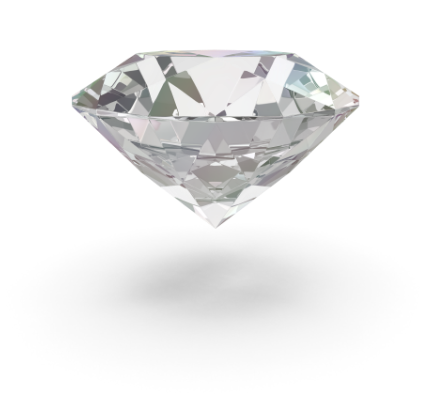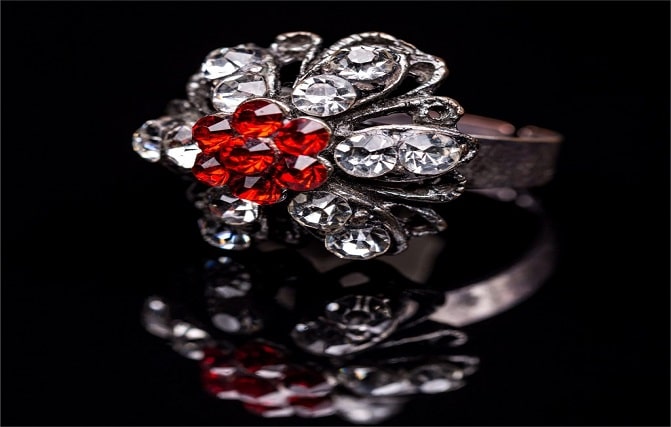




Lab-created diamonds are graded and certified using the same process as mined diamonds.
Diamonds are sent to a gem lab that specializes in grading diamonds. The majority of these labs grade using the 4c’s (cut, clarity, color, and carat — more on those later), however, a select few use their own criteria.
The most popular diamond certification labs are:
Gemological Institute of America (GIA)
International Gemological Institute (IGI)
HRD Antwerp (HRD)
Gemological Science International (GSI)
The diamond grading process is roughly the same for all of the diamond certification labs. Each diamond is graded independently by several gemologists at the lab. The individual grades are compiled and analyzed to determine the final grade.
This process is designed to provide each diamond with an unbiased grade. However, it’s not uncommon for a diamond to get a different grade, not only from a different lab but from the same lab if sent back for a second grading.
For this reason, there are a lot of differing opinions amongst consumers and diamond retailers as to which lab is the “best.” But, it’s important to keep in mind that those opinions are completely subjective. Each lab, much like anything in life, has its pros and cons.

A diamond retailer chooses which lab they use because they trust that lab to grade diamonds fairly. If diamond certification is an important factor in your purchase, you should have a candid conversation with your jeweller about which lab they use and why.
More than anything, jewellers want you to be confident in your purchase, so don’t be afraid to ask questions in order to find the best lab-created diamonds for your engagement ring or jewellery.
A diamond is evaluated using the 4c’s – cut, clarity, colour, and carat. Basically, they judge the diamond on how well it has been cut down from its raw form into a jewel, how flawless and clear it is, and its size.
The price of a lab-created diamonds tends to be less than mined diamonds by as high as 50%
However, this does not mean that a lab-created diamond is “cheap.” In fact, the capital costs for lab-grown and mined diamonds are pretty similar.
So, why are lab-created diamonds less expensive? Mined diamonds and lab-created diamonds have the exact same costs when it comes to cutting, polishing, and inspection. However, up to that point, the costs and processes are very different.
Mined diamonds have a long supply chain. To get a diamond from its raw form to a retail-ready gemstone requires miners, distributors, cutters, polishers, jewelry manufacturers, and retailers.
On the flip side, the lab-created diamond supply chain is much shorter by skipping the mining process. To put it simply, a lab-created diamond touches fewer hands, making it ultimately less expensive.
Several years ago, the mined diamond industry came under scrutiny with unethical production practices were exposed. These diamonds, sometimes referred to as blood or conflict diamonds, were funding violence and exploiting miners and their families.
Thanks to the Kimberley Process, established in 2003, these unethical practices have been significantly reduced. In fact, it’s estimated that 99.9% of natural diamonds are now conflict-free.
However, if avoiding conflict or blood diamonds is important to you, lab-created diamonds provide peace a mind that a natural diamond often cannot, and you may find reassurance in knowing the exact origin of your diamond.
As with the mining of any natural resource, the diamond mining has a significant impact on the environment. To be fair, diamond mining companies are fully aware of that impact and have taken steps to try to minimize the effect they have on the ecosystems around them.
However, lab-created diamonds are inherently and significantly less detrimental to the environment as it takes considerably less energy to grow a diamond in a lab than it does to dig it out of the ground. In fact, it is actually in the interest of the growers to minimize the amount of energy they use in the process to save money and decrease their costs.

As Lab-Grown diamonds continue to grow in popularity, diamond shoppers will be asking themselves this exact question. But, the only one who can answer that question is the shopper.
It all boils down to what is important to you. You may choose a mined diamond because you feel they hold a certain significance and are one of nature’s miracles with a mysterious origin.
Or, you may be attracted to a lab-Grown diamond because you feel they signify a modern love and the incredible progression of technology.
While some may want to debate which type of diamond is “better,” in reality, mined diamonds and Lab-Grown diamonds aren’t in competition with one another. Diamonds represent love, and love is love.
The true significance of the diamond you choose isn’t in its origin. It’s not how much you paid. It’s not how it’s graded. It’s not its size.
The significance of the diamond you choose is the love it represents.



Most people only think of just the 4’cs when judging the beauty of a diamond. However, there are also Types of diamonds. Type la, llb and Type IIA, llb. In the past, we haven’t talked too much about the different types of diamonds because the superior Type ll has been unattainable to the majority of the population…until now!
